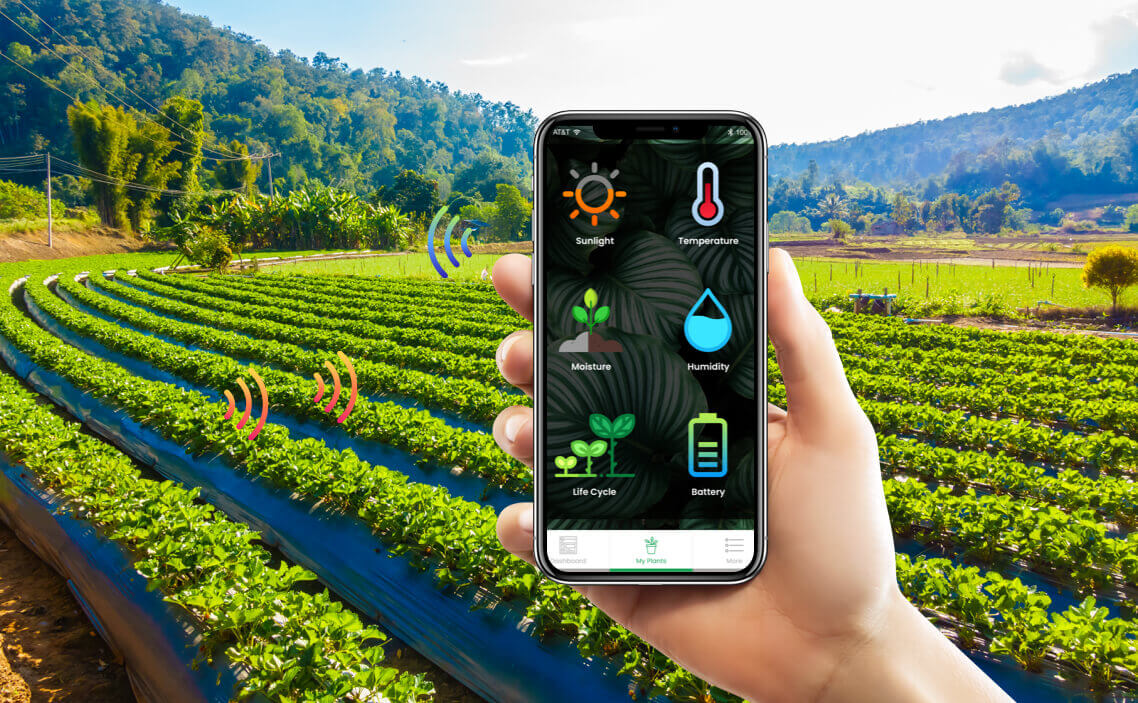Introduction to Smart Agriculture
Imagine a farm where every seed is planted with precision, irrigation systems work seamlessly, and drones monitor crop health from above. Welcome to the world of smart agriculture, where technology is not just an aid but a game-changer. This innovative approach to farming harnesses data-driven insights and advanced tools to optimize production while minimizing waste. As global populations grow and climate challenges intensify, it’s clear that traditional methods alone can no longer sustain our food systems. Enter smart agriculture—a revolution in how we cultivate the land and feed the planet. Let’s explore how these groundbreaking technologies are transforming farms into efficient ecosystems that promise healthier yields for generations to come.

Advancements in Technology for Farming
The landscape of farming is changing rapidly thanks to technology. Drones are now commonplace on farms, offering aerial views that help in monitoring crop health and managing resources efficiently.
Precision agriculture has emerged as a game-changer. Sensors placed in fields collect real-time data on soil moisture and nutrient levels. This information allows farmers to apply water and fertilizers more strategically.
Robotics play an essential role too. Automated machines can plant seeds, harvest crops, and even manage weeds with remarkable accuracy.
Furthermore, artificial intelligence is being integrated into decision-making processes. Farmers can analyze vast amounts of data quickly, leading to better yields and reduced waste.
Blockchain technology also finds its place by enhancing supply chain transparency, ensuring consumers know where their food comes from.
These advancements not only improve productivity but also promote sustainable practices essential for the future of agriculture.
Benefits of Smart Agriculture
Smart agriculture offers a myriad of benefits that directly impact productivity and sustainability. By integrating advanced technologies, farmers can monitor their crops in real time. This precision helps optimize water usage and nutrient delivery.
Additionally, the data collected from smart farming tools allows for better decision-making. With insights into weather patterns and soil health, farmers can plan more effectively to mitigate risks associated with climate change.
Cost savings are another significant advantage. Automation reduces labor costs while increasing efficiency across various tasks such as planting and harvesting.
Moreover, smart agriculture promotes sustainable practices. Techniques like precision farming minimize chemical inputs and waste, contributing to a healthier environment.
Consumers benefit too. Enhanced food quality and safety arise from improved tracking systems throughout the supply chain. As technology continues to advance, these advantages will only grow stronger.
Challenges and Limitations
Adopting smart agriculture comes with its own set of challenges. One major hurdle is the initial investment in technology. Farmers, especially small-scale operators, may find it difficult to afford advanced equipment and systems.
Additionally, a lack of technical knowledge can hinder implementation. Many farmers are accustomed to traditional methods and might struggle to adapt to new technologies. This creates a gap that needs bridging through training and education.
Data management poses another challenge. With various sensors collecting vast amounts of data, interpreting this information effectively can become overwhelming. Without proper analytics tools, valuable insights could be lost.
Connectivity issues in rural areas can disrupt operations reliant on real-time data transfer. Poor internet access limits the effectiveness of precision farming techniques, making it challenging for farmers to fully benefit from innovative solutions.

Case Studies of Successful Implementations
Farmers around the globe are embracing smart agriculture, and several case studies highlight its transformative impact.
In the Netherlands, a greenhouse facility used sensors and automation to optimize conditions for growing tomatoes. By monitoring temperature, humidity, and light levels in real time, they increased yields by 30%. The integration of technology was key to maintaining ideal growth environments.
Meanwhile, an Australian vineyard implemented drone technology for crop monitoring. These drones captured high-resolution images that helped identify areas needing attention. This precision farming technique not only improved grape quality but also reduced water usage significantly.
In India, smallholder farmers adopted mobile apps to access weather forecasts and market prices. This information empowered them to make informed decisions about planting schedules and sales strategies.
These examples illustrate how diverse sectors within agriculture leverage technology for efficiency and sustainability while addressing unique challenges specific to their regions or crops.
The Future of Farming: Predictions and Possibilities
As we look ahead, the future of farming is brimming with possibilities. Advanced technologies like artificial intelligence and machine learning are set to enhance decision-making processes on farms.
Imagine drones monitoring crop health in real-time, providing farmers with critical data at their fingertips. This could lead to more precise interventions and optimize resource usage.
Vertical farming may become a staple in urban areas, allowing food production closer to consumers while minimizing land use. Circular economy principles will likely reshape agricultural practices too, promoting sustainability.
Biotechnology advancements might pave the way for crops that withstand extreme weather conditions or require fewer inputs. Such innovations can ensure food security amid climate change challenges.
Collaboration between tech companies and farmers will foster innovative solutions tailored to local needs. The integration of smart agriculture tools into traditional methods could create a new era of efficiency and productivity in farming.

Conclusion
Smart agriculture is paving the way for a new era in farming. By integrating advanced technology, farmers can optimize their production processes and make informed decisions. The advancements we’ve seen in technology are not just enhancements; they represent a shift towards sustainability and efficiency.
The benefits of smart agriculture are significant. From improved crop yields to reduced environmental impact, the potential is vast. However, challenges remain, including high initial costs and the need for technical knowledge.
Successful case studies showcase how farms around the world have embraced these technologies to reap rewards. As we look ahead, predictions indicate that smart agriculture will continue to evolve, bringing even more innovative solutions to traditional farming practices.
With a focus on harnessing technology effectively, the future of farming stands poised at an exciting crossroads—one filled with opportunities for growth and transformation across agricultural landscapes worldwide.






